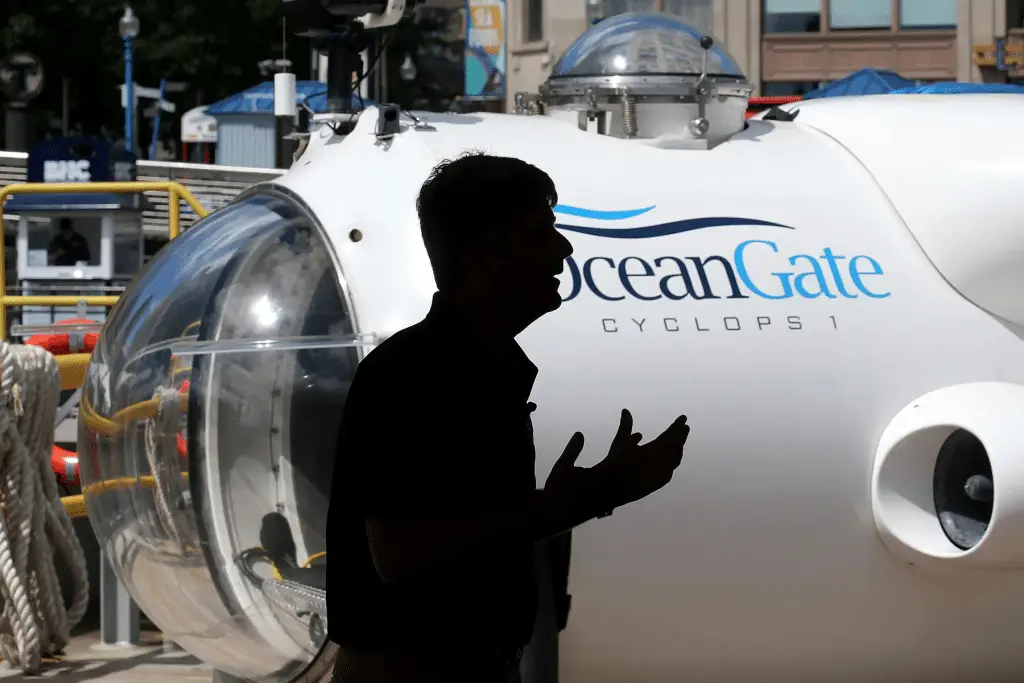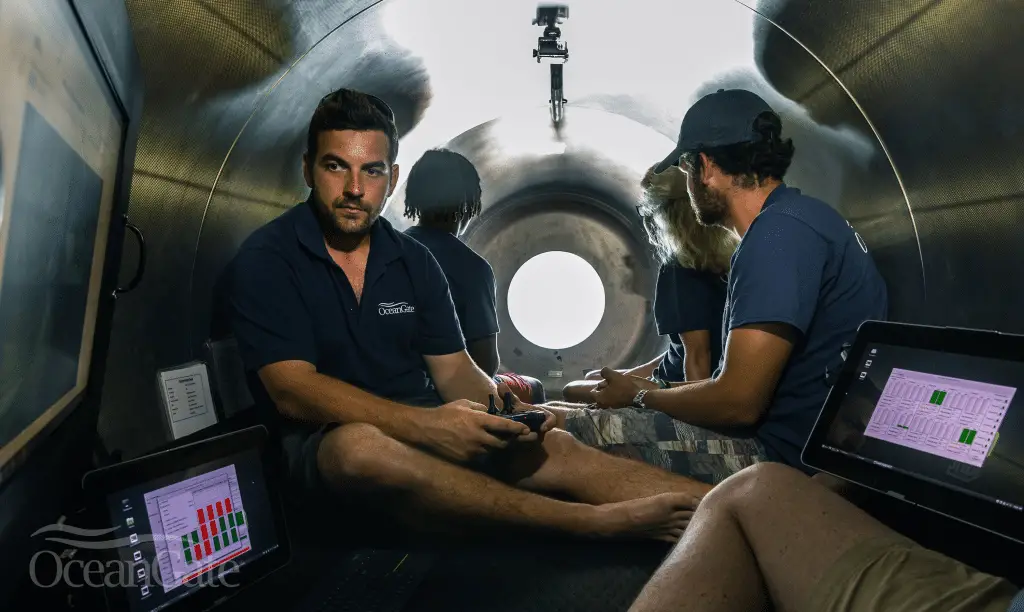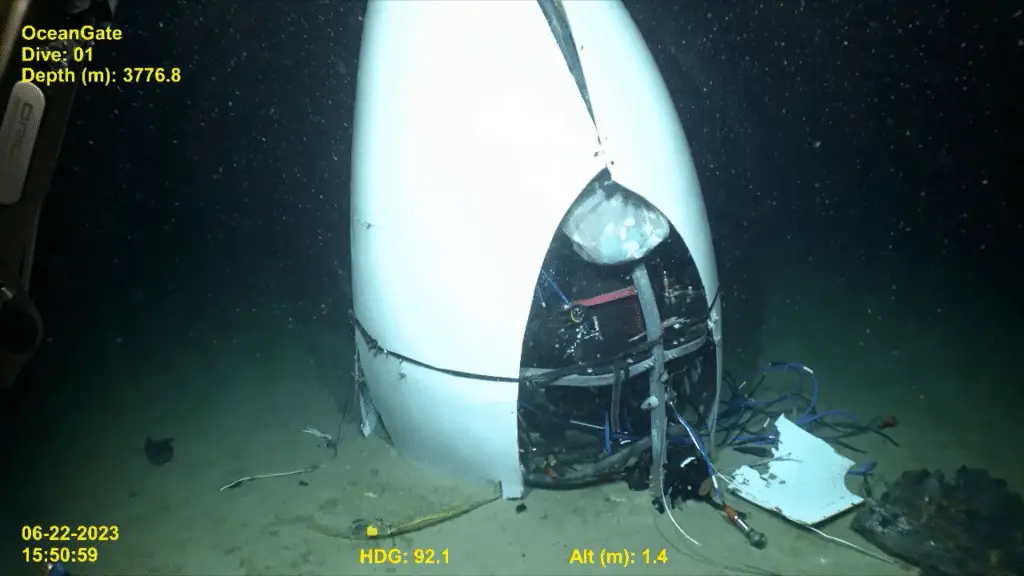The investigation into the submarine accident Titan has brought to light numerous details regarding its design and operation of OceanGatehighlighting possible gaps in security and operational managementand one of the main aspects that emerged concerns the Failure to certify the vehicle by independent entities, a choice that OceanGate justified with the need to innovate rapidly.
Nevertheless, this decision has raised serious concerns among industry experts, some of whom had already expressed doubts about the submarine’s resistance to the pressures of great ocean depths.
Design and technical concerns
One of the central elements of the investigation was the design of the Titanthe submarine was in fact built with lightweight and innovative materialsas a combination of carbon fiber and titaniumwith the aim of balancing strength and lightness. Many experts, however, have questioned the ability of these materials to withstand the enormous pressures to which the Titan would have been exposed at depths of over 3,800 meters, where the wreck of the Titanic lies.
At these depths, the pressure is approximately 380 times higher than atmospherican immense force that requires extremely robust and meticulously tested construction.
Some marine engineers had already raised doubts about the safety of the structure of the Titan During its development phase, and according to some witnesses, concerns were particularly about the strength of the carbon fiber used for the main body of the vehicle, which, although light, can suffer damage or deformation under prolonged stress.
The choice not to use a spherical design, commonly adopted in deep research submarines to ensure uniform pressure distribution, was also discussed, and another criticized aspect was the use of unconventional technologies for the control of the submarine, the Titan was in fact operated via a commercial video game controllera detail that has attracted a fair amount of criticism, given the extreme conditions in which the submarine operated.

Although some experts have downplayed the importance of this detail, considering it not crucial for safetyhelped call into question OceanGate’s overall approach to the design and operation of the Titan.
OceanGate’s choices and innovation
OceanGate defended itself by saying that their unconventional approach was dictated by the desire to push the limits of innovation and of open new frontiers in ocean exploration, however this approach has raised questions about the delicate balance between innovation and safety.
The company, in particular its founder and CEO Stockton Rushwho also died in the accident, argued that standard certification processes would slow down the development of the Titanimpeding the speed and efficiency that OceanGate believed was essential to its mission of democratizing deep-sea exploration.
Rush believed that expanding access to deep-sea exploration required a model of rapid and continuous innovation, comparable to that of the technology sector, and indeed, this approach has allowed OceanGate to reduce costs compared to traditional ocean shippingmaking it accessible to more people to explore places like the Titanic, but the accident of the Titan has demonstrated that such innovations can lead to huge risks when applied to an extreme environment such as the deep ocean.
Criticisms and responsibilities
After the accident, the lack of certification and refusal to follow more stringent standards led to a barrage of criticism against OceanGateas mentioned above, many have claimed that the company should not have conducted such dangerous operations without independent and rigorous oversight.
Some former OceanGate employees had also raised concerns, but it appears these reports were largely ignored, raising questions not only about the safety of the vehicle, but also about OceanGate’s corporate culture and risk management.

The incident has sparked a series of international investigations, and in particular the United States Coast Guard has opened public hearings to try to establish any legal responsibilities, and in this context, it has emerged that some industry regulations were ambiguous or insufficient to cover a rapidly evolving industry such as underwater tourist exploration.
This regulatory vacuum contributed to the lack of rigorous oversight of OceanGate’s operations, which allowed it to operate without having to fully meet the safety standards established for deep-sea operations.
These hearings also highlighted the complexity of managing safety in such innovative contexts, where new technologies are implemented before there are adequate regulations to govern them. Some experts have highlighted that in high-risk sectors such as this, the absence of a strong regulatory framework can lead to situations where innovation is privileged at the expense of safety.
Pressure from the media and the public
The accident of the Titan generated massive global media coverage, the dramatic nature of the situation, combined with the notoriety of the Titanic wreck and the involvement of rich and famous passengers, meant that every little development was closely followed by the media and the public.
This attention has put further pressure on OceanGate, which has been criticized not only for its handling of the incident, but also for the lack of transparency during the initial research phases.
The recovery of the wreckage of the submarine and the victims added another emotional layer to the story, with the families of the victims that they have expressed their pain and angerdemanding justice and answers, with some of these families filing lawsuits against OceanGate, claiming that the company had failed to take all necessary precautions to ensure the safety of passengers.
However, the legal issue is complicated by the fact that The passengers had signed liability waiversaware of the extreme risks they were facing.

In this context, the accident of the Titan has raised a series of questions that are not only technical and legal, but also ethical: is it right that a company can operate with such a level of risk, especially when human lives are at stake? Where is the boundary between the voluntary assumption of risk by participants and the company’s responsibility to guarantee minimum safety conditions?
The accident of the Titan OceanGate represents a pivotal moment in the history of undersea exploration, highlighting the dangers of pushing for innovation without adequate safety measures.
The ongoing investigation will seek to establish the precise causes of the accident and the company’s responsibilities, but it is already clear that the event has called into question the entire commercial ocean exploration sector, and the implications of this disaster concern not only technology, but also questions of ethics, regulation and corporate responsibility, which must be addressed urgently to prevent future accidents of this type.
If you are attracted by science or technology, keep following us, so you don’t miss the latest news and updates from around the world!
#OceanGate #Tragic #Mistakes
